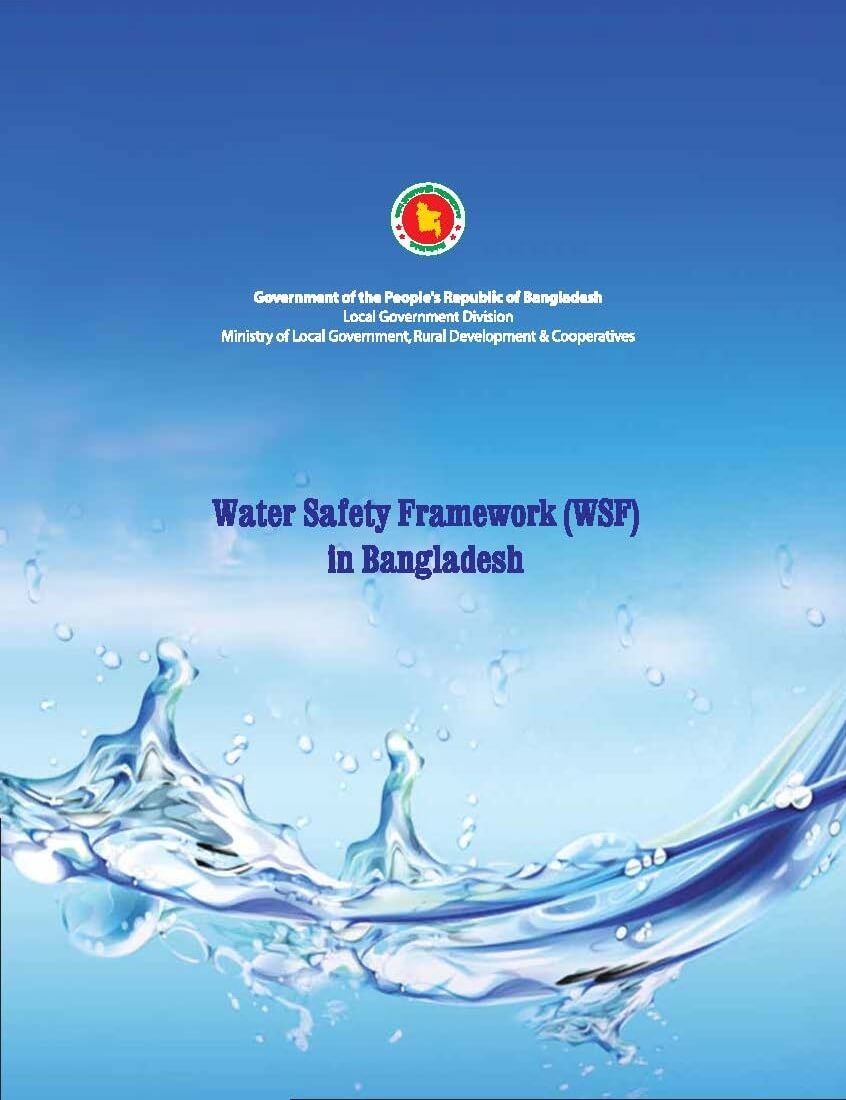Water Safety Framework (WSF) in Bangladesh

Category(s): National Documents
Language: English
Publication Year: 2011
Document Type: PDF
ISBN 13: 9789843341747
The 'Water Safety Framework (WSF) in Bangladesh' has been prepared based on WHO's 'Water Safety Framework (WSF)' approach and in consultations with the sector experts, stakeholders, professionals and water service providers to ensure the safety of drinking water. The WSF comprises three components: (i) Health Based Targets (HBTs), (ii) Water Safety Plan (WSP) and (iii) Surveillance. Bangladesh has adopted the revised national water quality standards as the Health Based Targets (HBTs) for water supplies. The National Forum for the WSS has approved the revised HBTs consisting of 40 parameters and targets of which five (four HBTs and one non-HBT) are the parameters of first priority category and the remaining 35 are the parameters of second priority category. Of the second category, 26 are based on the HBTs and nine on aesthetic consideration and acceptability reasons.
The Water Safety Plan (WSP) is an improved risk management tool designed to ensure the delivery of safe drinking water through the risk management approach by accommodating all steps in water supply from source to the point of consumption. In Bangladesh the WSP was initiated as a pilot program in the rural water supply system in 2005. Gradually, technology-specific WSPs, monitoring tool, and sanitary inspection tools were developed. In 2008, the urban water supply systems started implementing the WSPs in the urban areas. At the institutional and policy levels, institutional mapping and policy gaps were identified and the Vetting Guidelines for the WSS and Sector Development Plan were made available to guide and streamline the sector to ensure the quality of water. Prompted by the favourable policy environment and institutional focus, the DPHE has, of late, scaled up the WSPs in the Pourashava Piped Water Supplies, Rural Piped Water Supplies and different point sources with technical assistance from the WHO. Besides, some NGOs are implementing the WSPs in their respective project areas.
This document provides a simple guideline for developing WSP for both piped and non-piped water supply systems with relevant examples. The WSP analyzes all potential risks, their control measures and perfect actions. Simple risk analysis tools known as sanitary inspection forms are prescribed to assess the degree of sanitary risks of the systems. It also analyzes system improvement and supporting program aspect, integration of the WSP with rural water supply system - implementation strategy, methodology and on-site preparation. The advocacy strategy is also provided for the management and technical staff of water supply systems. The third element of the Framework is 'Independent Surveillance'. Surveillance is basically a follow-up-cum-supervision exercise to improve the management function of water suppliers/providers as well as the behavioral aspects of the consumers. The monitoring of critical drinking water quality parameters along with the operational monitoring of other control measures must be an inseparable part of water supply system management.
Focus Area
Water
Keywords
Water Safety Framework (WSF), Water Safety, Water
Country
Bangladesh
Copyright
Copyright ©201| Local Government Division, Ministry of Local Government, Rural Development and Cooperatives, Government of the People's Republic of Bangladesh. This publication or any part of it can be reproduced in any form with due acknowledgment.
No comment yet.